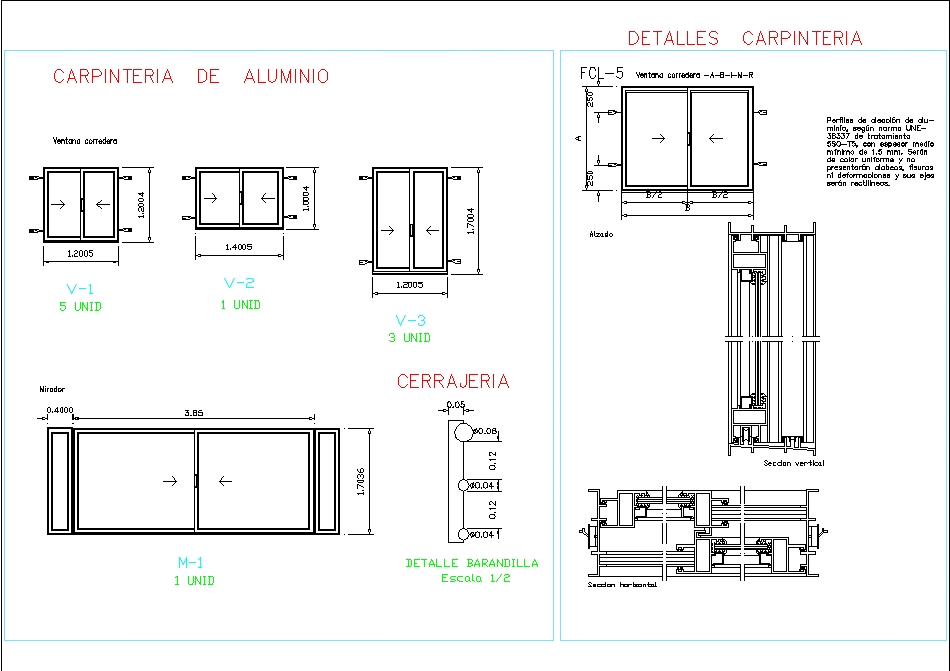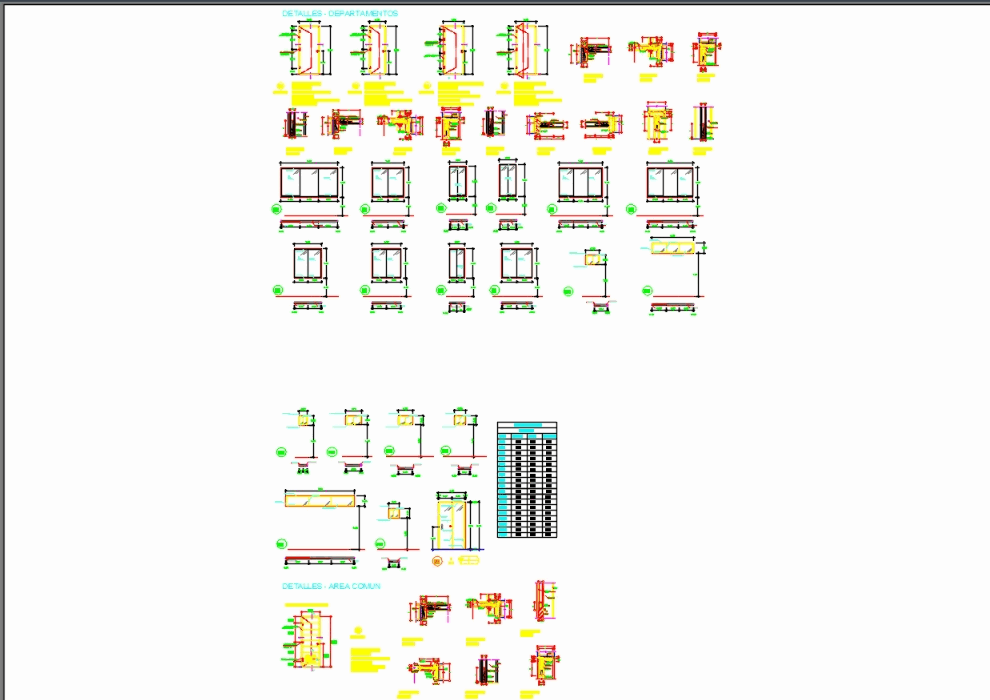
Detalles Constructivos De Puertas Y Ventanas En Autocad Hago
'Take the will for the deed'. Don't you have a plain english version of this message?
I'd like to read it from the source. The automatic translators are good for general understanding of the ideas on the sentence, but unfortunately can't handle the specific contents, and especialy the particularities of a discipline like this one that we deal with. Please don't see me riding the high horse. There are paragraphs uninteligible in the translation. It is by far much easier to understand in plain english. From an old message: Neil Blanchard wrote.I think that there is a way to set up a CADD program that provides a good framework for a 3D model that is linked to 2D in a workable way.
Especificos de alta sensibilidad se hace posible el disponer de una rigurosa informacion que. Habia hecho adornar las ventanas de San Martin de Torres con vidrios de colores. Espiritual y sociologico de la urbe medieval, en cuya construccion. Revelado: 'Yo soy la puerta, el que por Mi entrare se salvard.. Descargar bloque CAD en DWG. Herreria artistica vistas (787.07 KB).
I'd start with a fast 3D modeler that has enough tools to create the basic skeleton building -- a kit of parts that you can block out a 3D model with. We would need not only walls and roofs, but floors, site, and generic windows and doors, and major structural elements – kinda' like a 3D version of the 2D part of DataCAD: intuitive, straightforward, and flexible! Neil, This sounds pretty good to me. Many users of DataCAD, today, start the design from the 3D model, even don't going deeply on detail, and makes a double-job for finishing the 2D drawings derivated from the 3D model.
Even not going so deeply on details this approach help them to reach the client requirements very fastly. Then the key part is a plan/sectioning/elevation tool that allows you to draft in the specifics that are associated with the 3D model. You choose the drawing planes, big or small, that 'slice' through the 3D model and provide the outlines and spatial framework for all the plans, sections, elevations, details, that you can 'enhance' in 2D with lines, notes, dimensions -- that are all linked (associated) with the 3D model.
This would provide a very important aspect that is sorely lacking with today's DataCAD: automatic coordination! I strongly believe on the new V.11 'Sections' feature. With perhaps two specific improvements: 1) allowing to change the 'Viewer' position; and 2) making the 'updating/refreshing' feature more effective; it could make a great job for producing 2D sheets over 3D models.
From another message: joshhuggins wrote:I agree with Neil's view of a ideal parametric Datacad 95%, but the 5% difference is I would like to be able to model in high detail for connections and such in 3D. We do it now for our projects in 2d, and for our purposes here, to be able to in cad or a viewer (O2C-ish), to be able to have all of our model viewed, and have all of the connections have the detail when zoomed in on would be great. Josh, What about to improve the powerful capabilities of X-Ref files, to enhance ability to detail connections from external drawings, associated with the main (parametric) model? An extensive use the X-Ref features could make scalable the finishing requirement steps. Neil Blanchard wrote.Common joists, rafters and studs are not critical to the coordination -- they could be added to the model if you want to, but espeically as parametrics get started, I don't think that the parametric model needs to include them.
From my point of view, Frame-it should be attached to Roof-it, turning into a great parametric engine for roofs. Frame-it handles, in some degree the starting point of parametrics. Imagine if it could be attached to work inside the (parametric) 3D model. What about to think on a 'scalable' parametric modeler? Thanks, Miguel. My biggest wish list: Neil, Josh, Miguel, you all have been saying what I have been wishing for ever since I started using Dcad. Yes I bought Dcad+ but found it wanting.
 Today I was finally able to show a client a 3D 'O2C' of his future home, which up until now he was apprehensive about because he could not visualize the details, balance and scale of the spaces making up his residence. The 'O2C' blew him away. He wanted me to Email the project to him so his wife could look at it.
Today I was finally able to show a client a 3D 'O2C' of his future home, which up until now he was apprehensive about because he could not visualize the details, balance and scale of the spaces making up his residence. The 'O2C' blew him away. He wanted me to Email the project to him so his wife could look at it.
I told him I couldn't because I have not set up a web site yet. Yesterday I had to show one of our local Planning Departments a design for a complex of 7 building units and how they are to interact with each other and the existing neighbourhood on a sloping site. I accomplished this by using 'XRef' and a common site plan and separate 3D buildings.

The Planner told me if I could Bring this to Council she was sure we would have no problem getting their approval. I'm afraid I don't know enough about how to use Power Point to do this. I am hoping that DataCad will be following up with these ideas that you guys have so elequently suggested, because at the moment half the work that I have put into the 3D portion of my projects will be wasted because every time I make a change to the 3D I have to go back and correct my 2D Drawings.